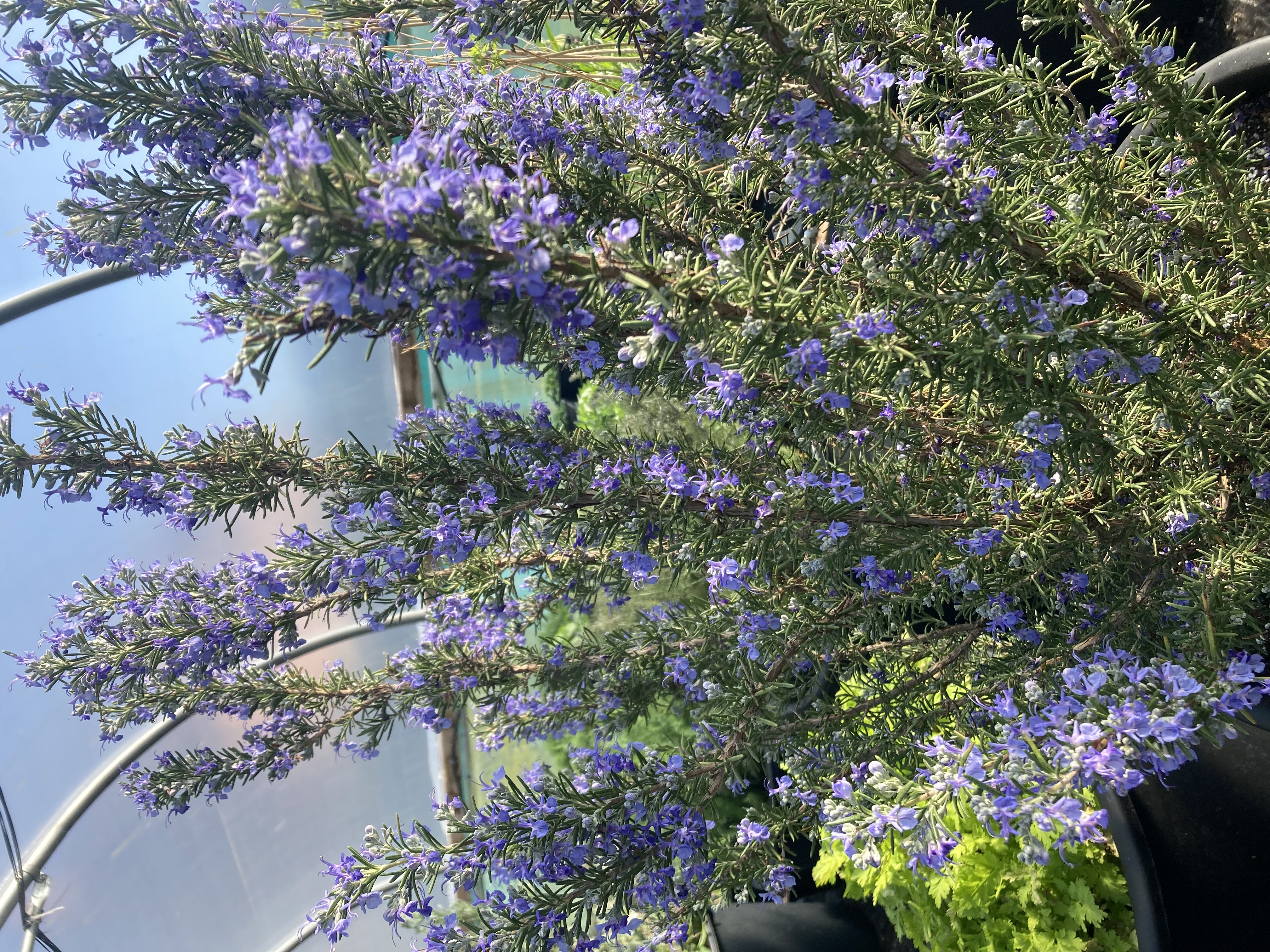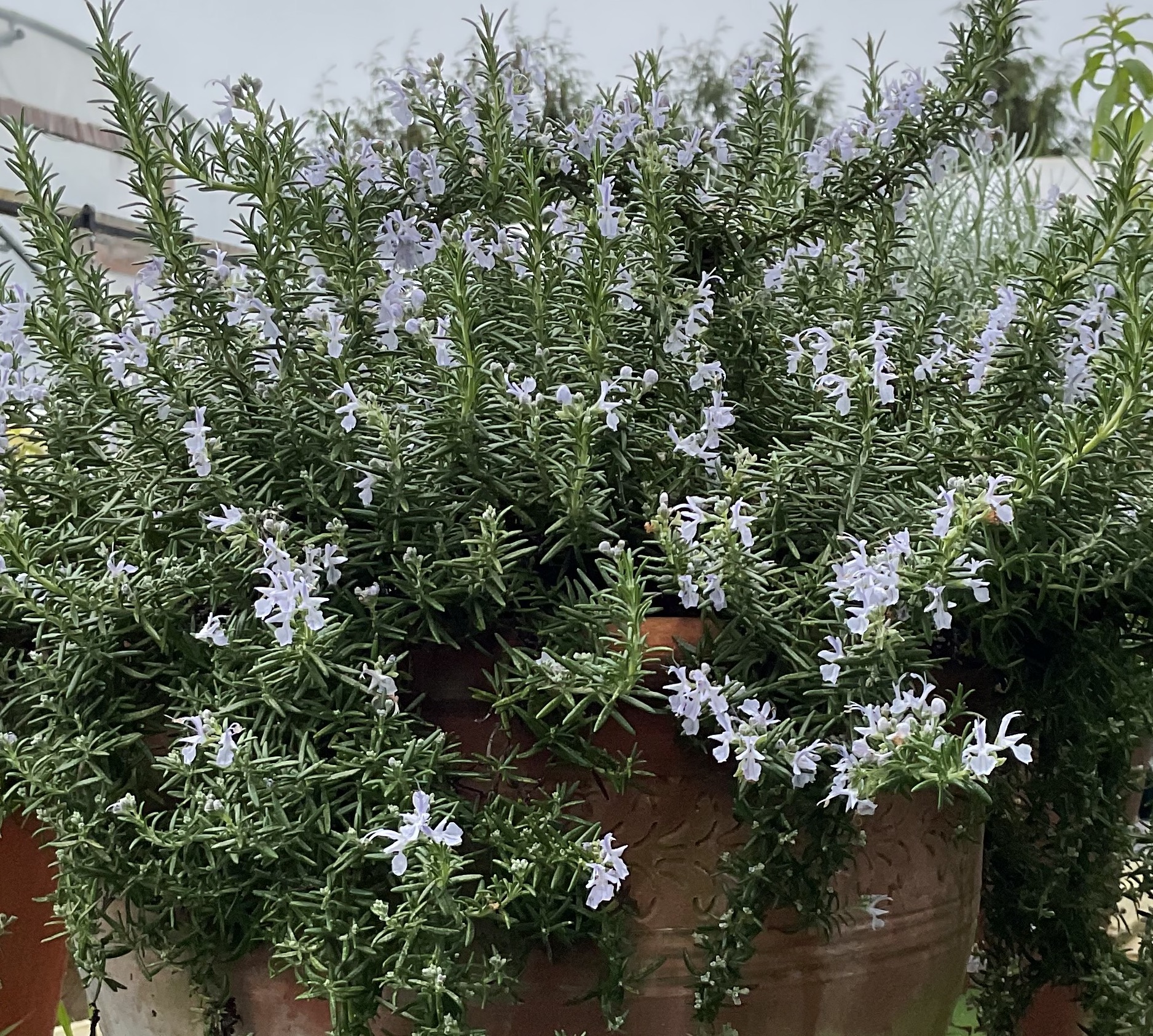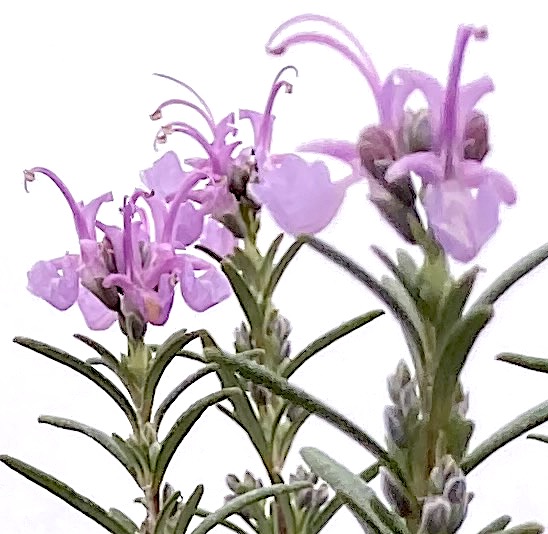
Will it really happen this year
Kitchen Garden Plant Centre truly made its mark in the edible plant scene winning not only our first ever prestigious RHS Gold Medal
Rosemary: Plant selection, health benefits and practical tips

Rosemary is one of our favourite herbs on the nursery. It surprises us with flowers at what should in theory be the wrong time of year. This month we have had a stunning display of blue flowers on our Green Ginger Rosemary (you may have seen Neil post this on our Facebook page) with some fresh growth coming through ready for us to take some more cuttings.
Literature suggests Rosemary flowers in the Spring and Summer, yet for the past three years we have had a pink flower display on our Rosemary ‘Roseus' in our front garden. A welcomed surprise.
We just love the scent and the abundant flowers of Rosemary, which can range from light blues to intense violet blues, as well as the white and pink cultivars.
Trailing Rosemary such as Rosemary ‘Haifa’ creates a fine specimen for us in our show displays. As the branches get larger and heavier they trail over the edges of our nice terracotta pots creating a beautiful display. You may also see us using Rosemary ‘Haifa’ on the edge of a border. Some fun could be had with a semi-prostrate Rosemary such as Rosemary ‘Foxtail’ which bears both upright and trailing stems.


In Shakesperean times Rosemary was found tightly clipped and used as topiary forming cones and spheres. Perhaps a useful option to use in place of a Buxus ball which is suffering from blight, with the additional benefit of the beautiful flowers brightening up the doorstep where often we see the browning blighted box balls greeting us at the door. We find Rosemary ‘Tuscan Blue’ is a very good option for Rosemary topiary. Rosemary has a long flowering period, so is an added doorstep benefit.
Rosemary is also a very useful hedging plant and a great Rosemary hedge option is Rosemary ‘Miss Jessopp’s Upright’. It is one of the taller growing and most upright Rosemary cultivars with green short and slender needles and blue flowers. Clipping will encourage bushier growth. We have created a Rosemary hedge pack for just this very reason.
A well maintained Rosemary hedge will stay looking good and will deter woody growth. It is important to clip back yearly in the Spring to retain its fresh good looks. Rosemary will not tolerate being cut back into the wood, so cut back the softer bendy branches only. A more informal look could be obtained by simply lightly pruning the Rosemary hedge to shape.
Rosemary is a great option in coastal regions as well as inland. The botanical name of Rosemary is Salvia rosmarinus, with Rosmarinus meaning dew (ros) of the sea (marinus) so called as the blue flowers are reminiscent of the costal dew.
The strongest aromas of Rosemary will be found in the Summer where the volitile oils are at their greatest. Should you wish to harvest and dry Rosemary, July/August is the best time to do this in the U.K. Harvest it in mid morning in dry weather before the midday sun causes the oils to be released by the sun. To dry Rosemary tie a a few branches in a bunch and hang upside down in an airing cupboard for about a week.
However, Rosemary is evergreen, so its leaves can be used throughout the year fresh from the shrub rather than harvesting and storing it, leaving it a very convenient plant for our garden, providing fabulous pollinator opportunities too. Rosemary can continue to be harvested and used when in flower.
In recent years studies have found Rosemary to improve cognitive performance, including mental alertness and memory. This is not really new news, sure since Ancient Greece Rosemary has been associated with remembrance and has also been known in tradition and folk medicines for its potential memory-enhancing effects, as a stimulant and to improve concentration. It is also a good herb to help compact SAD (Seasonal Affective Disorder). With low mood comes additional challenges and lack of focus or brain fog. Rosemary stimulates/ excites the cerebral cortex to encourage alertness and improve focus.
As the Rosemary herb is one of the Lamiaceae family it carries the same antiseptic, antibacterial, antimicrobial...properties of other family members such as Mint, Sage, Lavender. So with this knowledge Rosemary is a fantastic and natural disinfectant.
To make a homemade disinfectant simmer Rosemary in a pan of water for 30minutes. Strain and use it within a week. Rosemary can also be used as a conditioner for dark hair, steep Rosemary in hot water for 5 minutes, strain and use to create a shine in dark hair. (For fair hair use Chamomile).Rosemary and Lavender are often used in aromatherapy or on the massage table, Lavender for its soothing properties and Rosemary for it invigorating properties.
A word of caution Rosemary should not be used as an essential oil or consumed in excess if pregnant or if epilepsy is present. It can be made into a tea/infusion to relieve psychological tension and improve headaches, as well as aiding digestion.
Propagation of Rosemary should be completed from semi-ripe cuttings (typically from June- August), but can be done when the correct cutting material is present.
Rosemary thrives most in southerly facing aspects and against a wall. Hailing from the Mediterranean it does well in free draining soil but is tolerant of a wide range of soils and also grows well in chalky soil. Some varieties are hardy down to -15, but most tolerate -5 to -10 degrees. One thing Rosemary will not tolerate is sitting in wet ground, so if planting in a pot be sure the pot is slightly lifted off the ground and has free drainage.
The Rosemary herb is a great addition to a family meal with sprigs added to roast meats, in stews and one of my favourites are Sea Salt and Rosemary focaccia, delicious! It actually makes a lovely ice-cream too. Or just simply throw in some rosemary sprigs and garlic over oiled root vegetables for a simple winter recipe.
Next Article